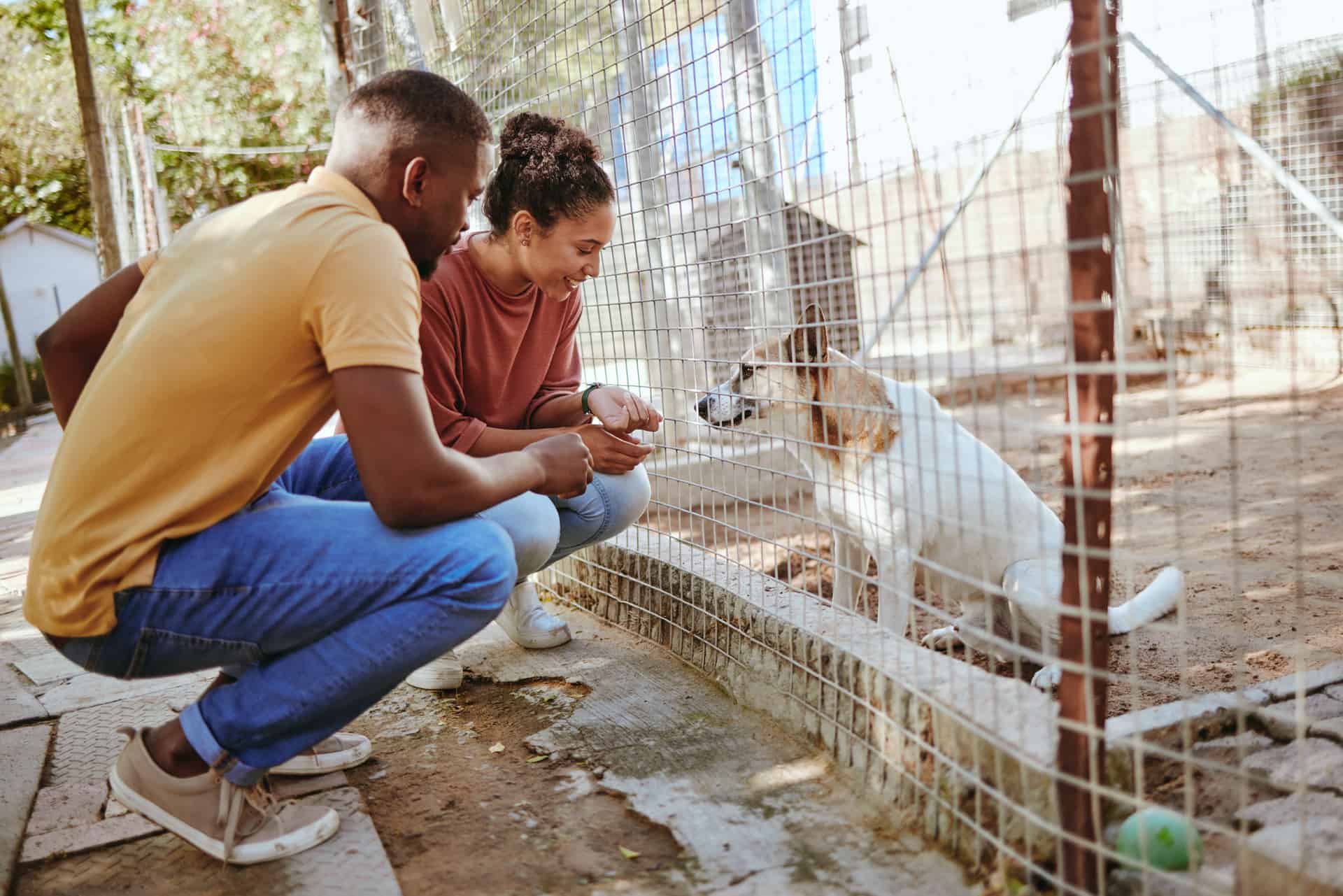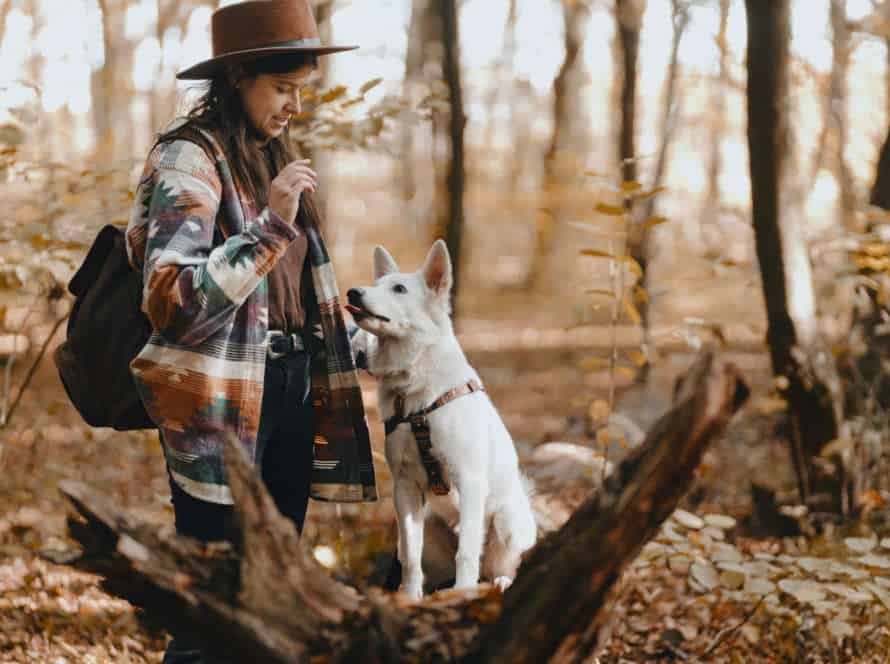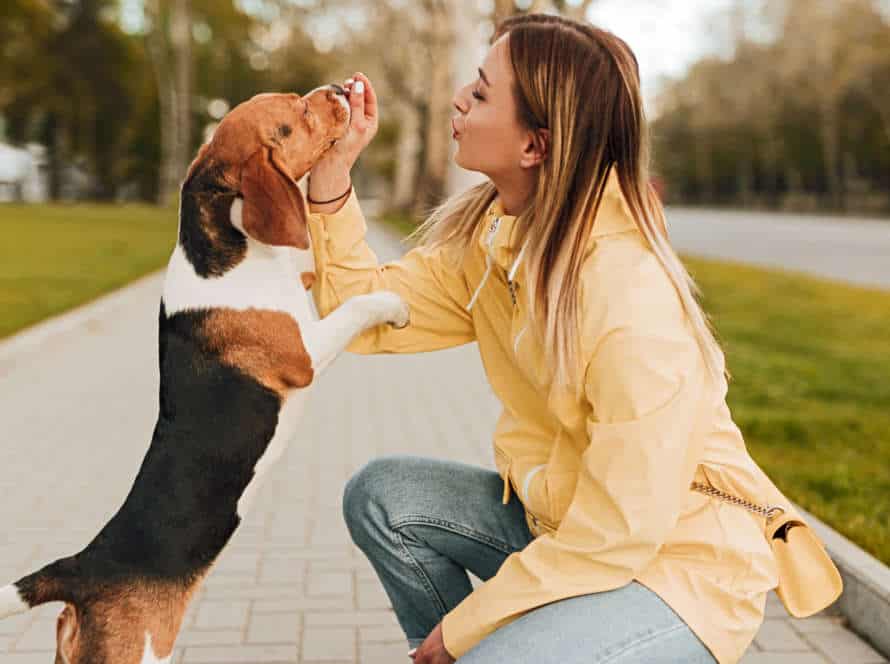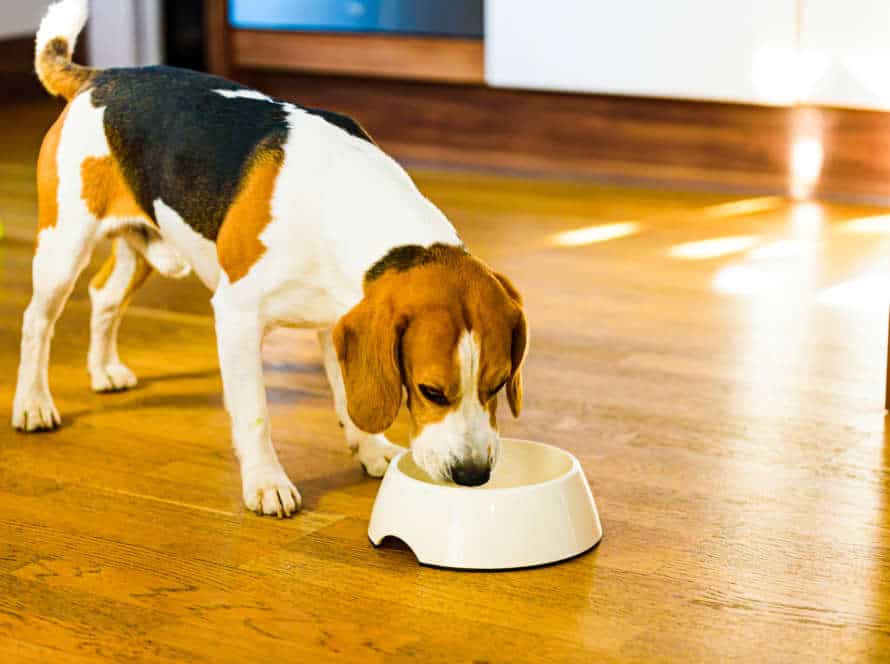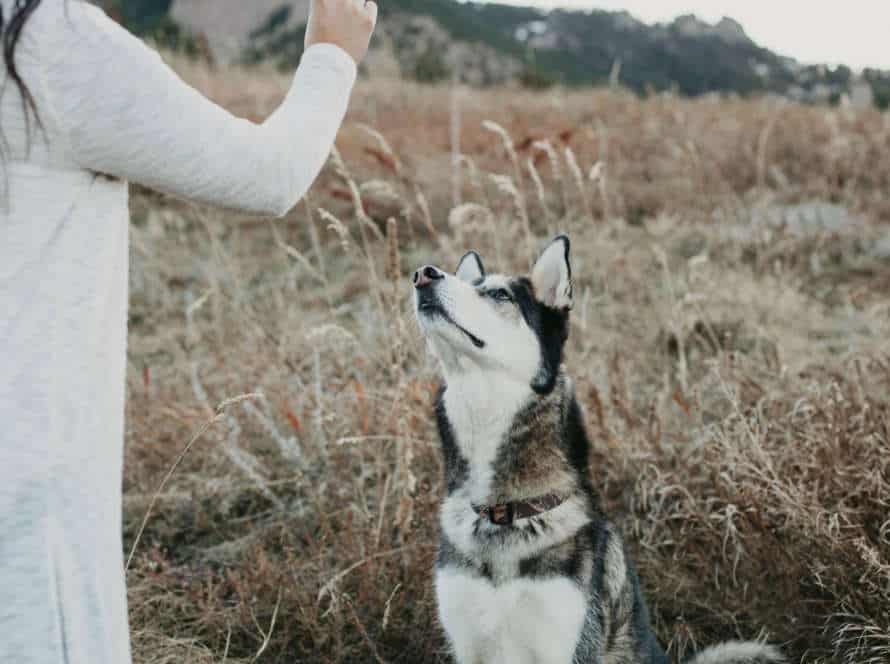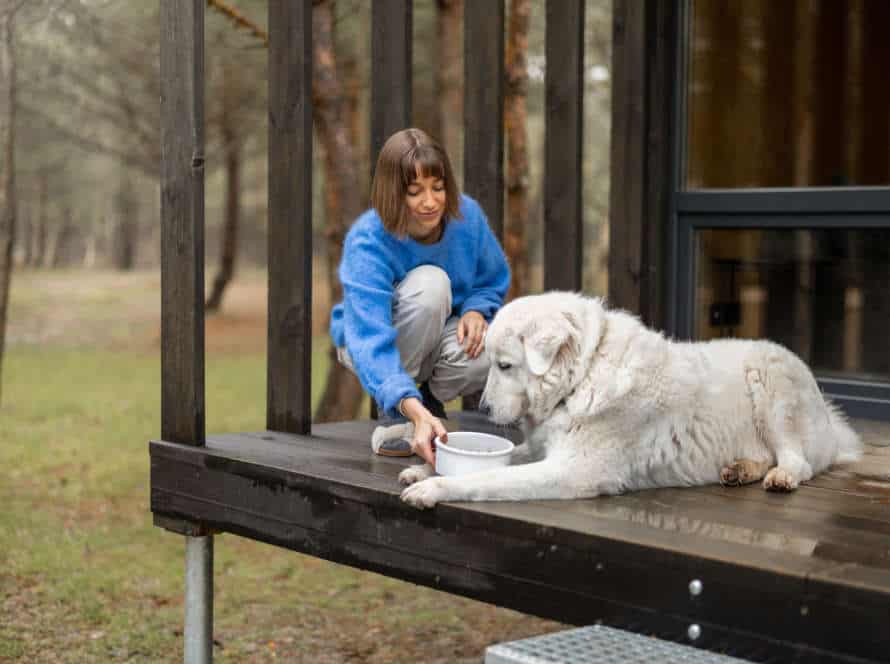Building Trust in Your Rescued Dog: A Recipe for Success
To have a good relationship with your rescued pup, trust is key! Here are some tips to help you build trust:
- Be patient. Let your dog get used to its new home and connect with you. Don’t rush it.
- Be consistent. Stick to a schedule for feeding, exercise, and potty breaks.
- Positively reinforce good behavior and new skills. Use treats, praise, and love.
- Train your pet. Enroll them in classes or work with a trainer.
- Understand their body language. See what they need and are concerned about.
- And lastly, shower them with love and affection. This will create a strong bond of trust.
Understanding Your Rescued Dog’s Past
Before you and your rescued pup can be successful together, you must understand their past. Consider the special way your pup has experienced and adapted to the world. In this part, let us explore their past and how it can help you both build a great relationship. Knowing this will help create a trusting bond between you and your pup.
Learning About Your Dog’s Previous Home Environment
Before taking home a rescued pup, it’s vital to learn about their past home. Here are some key points to consider:
- Chat with the shelter workers or previous owner to get the pup’s story. This includes any behavioral concerns, habits, issues, and training they had.
- Watch your pup’s body language and behavior in the first few days and weeks to recognize signs of unease, fear, or aggression.
- Provide a secure and cozy place in your home and set up a routine to give them a sense of security and steadiness.
- Establish trust with positive reinforcement techniques. Offer rewards for good behavior, steer clear of punishing, and reward with treats and compliments.
Patience, consistency, and understanding are necessary for creating trust and a strong bond with your rescued pup. Pro tip: Ask for help from an expert dog trainer or behaviorist if you face any issues with training.
Knowing Your Dog’s Health and Behavior History
If you’ve adopted a pup, it’s essential to know their health and behavior history. This will help you create a secure space in which your furry pal can flourish. To get the info you need, ask these questions:
Health History:
- Vaccinations?
- Neutered/Spayed?
- Any pre-existing conditions?
Behavior History:
- Temperament?
- Around kids/dogs?
- Fears or phobias?
Knowing your pup’s background will give you a glimpse into their present conduct and assist you in developing a training program that works. Building trust with your rescued dog takes time and patience, but it’s worth it for a healthy and cheerful bond.
Identifying Your Dog’s Fears and Triggers
Recognizing your doggy’s anxieties and what sets them off is key for developing trust in your rescued pup and making a secure setting for them. Here are some tips:
- Watch your dog’s body language and conduct when in different situations, such as when meeting strangers or animals, or hearing loud noises or sudden movements.
- Notice if they exhibit signs of unease or distress, like standing fur, panting, shaking, or growling.
- Pay attention to the signals that cause fearful reactions, like a certain sound, smell, or visual cue.
- Log their fears and triggers, and create a strategy to stay clear of or deal with these conditions in a safe and positive way.
By grasping your rescued canine’s past and strengthening trust through patience, positive support, and comprehension, you can help them surmount their fears and build a healthy and joyful connection with you.
Creating a Safe and Secure Home Environment
For a trusting and secure home for your adopted pet, it’s essential to make it safe and secure. Provide your pup with lots of comfort and set up a routine. This’ll help them get used to their new home slowly. Here, we go over tips for creating this environment.
Introducing Your Dog to Your Home Step-by-Step
Introducing a pup to a fresh home requires patience and proper planning. To make sure your pet feels secure and relaxed, here are the steps to take:
- Begin by setting up a safe and secure environment for your fur baby. Check for potential hazards like exposed wires or harmful plants.
- Introduce your canine to one room at a time. Start with a quiet and calm spot, like a bedroom or bathroom. Close the door. Then, give access to other parts of the house as your pup grows more accustomed.
- Designate a private area for your pup. This may be a crate or a specific corner with a comfy bed and toys. This is where they can go to when feeling overwhelmed.
- Set up a routine for feeding, exercising, and training your pup. Consistency will help build trust and create a sense of stability.
- Give your pup plenty of time to get used to you and your home. Show love, patience, and understanding during the adjustment period.
Remember, each dog adapts differently. Be patient. Take it slow. Soon, your newest family member will feel at home!
Creating a Safe Space for Your Dog
Create a spot in your home specifically for your pup. Inspect the area for potential threats, like cords, plants, or sharp objects. Use baby gates and crates to limit your dog’s area. Give your pup lots of toys to keep ’em busy. When dealing with a rescued dog, be patient, consistent, and use positive reinforcement. Establish a routine and make sure to give exercise and playtime daily. Praise and affection are the best rewards.
Pro Tip: Ask a dog trainer for personalised advice.
Developing a Routine for Your Dog
Develop a routine for your rescued pup to establish a safe home and build trust. Here’s how:
- Set a timetable for feeding, exercising, training and play.
- Identify sleeping, eating, and bathroom areas.
- Create consistent commands for training and use positive reinforcement.
- Observe your dog’s behavior and body language to understand their needs and feelings.
- Include regular socialization with other pets and people.
Pro Tip: You’ll benefit from the routine too, by planning your day and managing your time better.
Training Your Rescued Dog
Train your rescued pup – it’s a great way to gain their trust! Use positive reinforcement, be patient, and stay consistent. You can teach your pup to obey and trust you. Here are some tips for a successful training environment with your rescue pup:
Using Positive Reinforcement Training for Behavior Modification
Positive reinforcement training is a great way to change your pup’s habits, especially if they’re a rescue. Here’s what to do:
- Figure out what makes them tick – treats, toys, or praises.
- Give them positive reinforcement for good behavior. E.g., give them a treat and compliments when they sit on command.
- Don’t resort to negative reinforcement like yelling, smacking, or scolding. This’ll destroy trust and could cause fearful behaviour.
- Stick to the same routine, and give rewards as soon as possible.
- Give them a safe space with plenty of exercise, socialisation, and mental stimulation.
Building trust and changing behaviour takes time and patience. Positive reinforcement training will help you form a strong, loving bond with your rescue pet.
Avoiding Punishment-Based Training Techniques
Punishment-based training techniques can be harmful to your rescued pup’s emotional and mental health. Instead, use positive reinforcement to build trust and a strong bond with your furry friend. Here are some tips on how to avoid punishment-based techniques:
- Positive reinforcement: Reward good behavior with treats, praise, and toys.
- Understand your pup: Observe their behavior and try to understand why they do certain things. This will help you identify the root cause of undesirable behavior and find alternative solutions.
- Patience: Your pup may have trust issues due to past trauma or abuse. Show patience while training and work at their pace.
Remember, building trust requires effort and time, but it’s worth it. Positive reinforcement helps build a strong bond and helps heal emotionally.
Pro Tip: Training your pup is an ongoing process, so stay consistent, patient, and don’t be afraid to seek professional help if needed.
Teaching Basic Commands (Sit, Stay, Come) to Form a Strong Relationship
Teaching your rescued pup simple commands such as Sit, Stay, and Come can foster a strong relationship with your furry mate and make them feel secure and adored in their new abode. Here are some ideas to remember for victorious training:
- Start off easy: Begin with orders like Sit and Come, which your pup can learn quickly.
- Utilize rewards: Use treats or positive reinforcement to encourage your pup to obey the commands.
- Be consistent: Always use the same words and gestures when you give a command, to help your pup learn faster.
- Practice regularly: Set aside time each day to practice the commands with your pup.
With patience and steadfast efforts, these basic commands can help reinforce your bond with your rescued pup, while also making them feel safe and loved in their new home.
Building a Bond with Your Rescued Dog
You and your rescued pup have a special bond. Establishing trust with a dog who has had a tough past is difficult, yet fulfilling. Here are some tips for making a trusting and loving relationship with your rescued pup:
Spending Quality Time with Your Dog
Spending quality time with your pup is key to creating a strong relationship. Here’s how to build trust and establish a lasting bond:
- Set up a schedule: Routines are great for your dog’s confidence. Plus, they understand what to expect from you.
- Get outside: Walks are not only great for exercise but also for building a connection.
- Play together: Games help obedience, and let your pup release energy.
- Socialize: Introducing your dog to other people and pets is vital for their wellbeing. They’ll be more comfy in different situations.
Building trust with your rescued dog takes time, patience and consistency. As you spend quality time, you’ll see the advantages of a healthy and happy pup.
Encouraging Healthy Interaction Between the Dog and Family
Creating a strong bond and a peaceful home starts with healthy interaction between your pup and family. Here are some tips:
- Dedicate quality, one-on-one time daily with your dog.
- Set clear boundaries and expectations – like behaviour rules and specified home areas.
- Praise, treat, and love your pup for their good behaviour.
- Exercise and provide mental stimulation to keep them happy and healthy.
- Involve family to train and look after the pup – to cultivate responsibility and ownership.
Be patient, consistent, and loving – and you will have a trusting relationship with your rescued pup for life!
Incorporating Socialization into Your Dog’s Life
Socializing is important for your pup! If they’re a rescue, it’s even more critical. This will help build a strong relationship between you and them, and make them comfy around other pooches and humans.
Here’s how to do it:
- Go on daily walks and let them meet other people and dogs.
- Sign up for obedience classes to learn positive reinforcement techniques.
- Let them explore new places like hikes or the dog park.
- Give them toys and games.
Remember, each pup is different, so be patient and adjust to their needs. Make sure their socialization experience is great!
Seeking Professional Help
Professional animal behaviorists possess the expertise and know-how to help you comprehend and change your dog’s conduct. They can create personalized training plans for your pup, tailored to their individual needs. Seeking specialist aid for your rescued dog is a must for developing trust.
Here, we will discuss why this help is advantageous and how to go about finding it.
Consulting with a Veterinarian or Canine Behaviorist
If you’ve taken in a pup and having difficulty gaining its trust, it could be time to contact a vet or canine behaviorist. Here are a few signs that show your pooch may need professional assistance:
- Fear, aggression, or anxiety.
- Destructive behaviors.
- Inability to learn commands or house train.
- Resisting or avoiding socialization.
A vet or canine behaviorist can make solutions tailored to your pup’s needs. They can figure out the source of the issue and give the right treatment, instruction, or medicine. Seeking expert help can aid you in creating a bond of trust, better communication, and a long-term, loving relationship with your rescued dog.
Pro tip: Always stay patient and consistent with your pup’s teaching and use positive reinforcement techniques.
Identifying When Professional Help is Necessary
As a dog owner, it’s important to know when to get professional help for your rescue pup. Signs that indicate this need may include aggressive or destructive behaviour, intense fear/anxiety, or excessive barking/whining. To gain your pup’s trust, patience, consistency and positive reinforcement are key.
Seeking professional help is an excellent way to ensure your dog’s happiness and long-term wellbeing. It also shows them you’re willing to do all you can to make their life better. Pro Tip: Regular exercise, proper diet, and mental stimulation are essential for your pooch’s behaviour, health and joy!
Following Expert Recommendations for Building Trust and a Positive Relationship.
When it comes to having a great relationship with your rescued dog, getting professional help and following expert advice can be super helpful. Here are some tips for building trust:
- Be patient and consistent when training.
- Reward good behaviour.
- Choose a peaceful and comfy area for training.
- Respect your pup’s boundaries and learn their body language.
- Make sure they get lots of play & exercise.
- Work with a professional trainer to create a personalized plan that fits your pup’s needs.
By doing these things and getting help from a pro, you can build trust and a positive relationship with your pup. That way, both of you can have success in the long run!
Frequently Asked Questions
1. Why is it important to build trust in a rescued dog?
Building trust in a rescued dog is important because they have likely experienced trauma or neglect in their past. Trust helps them feel safe and secure, and it allows them to bond with their new owner and form a positive relationship.
2. How can I build trust in my rescued dog?
Building trust in a rescued dog takes patience and consistency. It’s important to provide a stable routine, offer positive reinforcement, and avoid punishment. Spend time bonding with your dog through play, training, and socialization.
3. How long does it take to build trust in a rescued dog?
The amount of time it takes to build trust in a rescued dog varies depending on their individual history and personality. It can take anywhere from a few weeks to several months to establish a strong bond.
4. What are some signs that my rescued dog trusts me?
Some signs that your rescued dog trusts you include wagging their tail, cuddling with you, and following you around. They may also respond well to your commands, enjoy playtime with you, and seek affection from you.
5. What should I do if my rescued dog is struggling to trust me?
If your rescued dog is struggling to trust you, it’s important to remain patient and consistent. Consider seeking the help of a professional trainer or behaviorist, who can give you additional tips and guidance. Remember that building trust takes time and effort.
6. Can I ever fully regain my rescued dog’s trust?
Yes, with time and dedication, it’s possible to fully regain your rescued dog’s trust. However, it’s important to remember that every dog is different and some may take longer than others to fully trust their owners. Patience and consistency are key.

